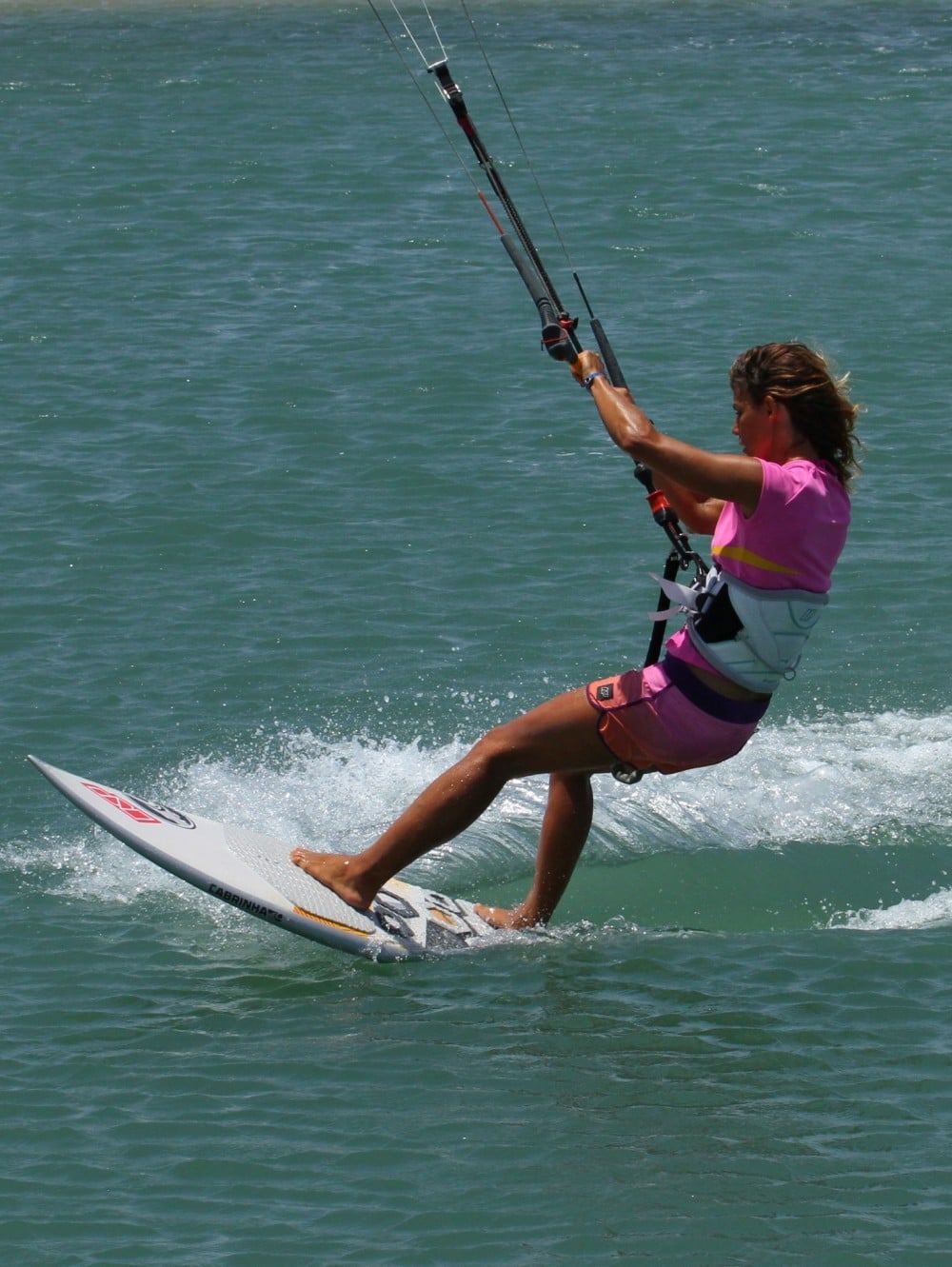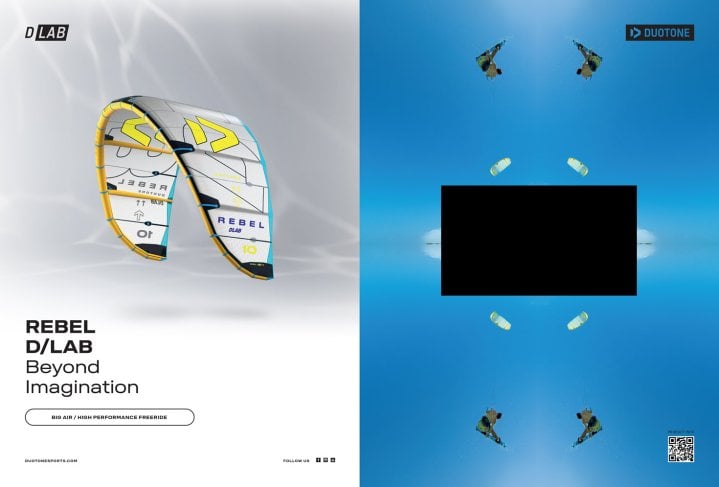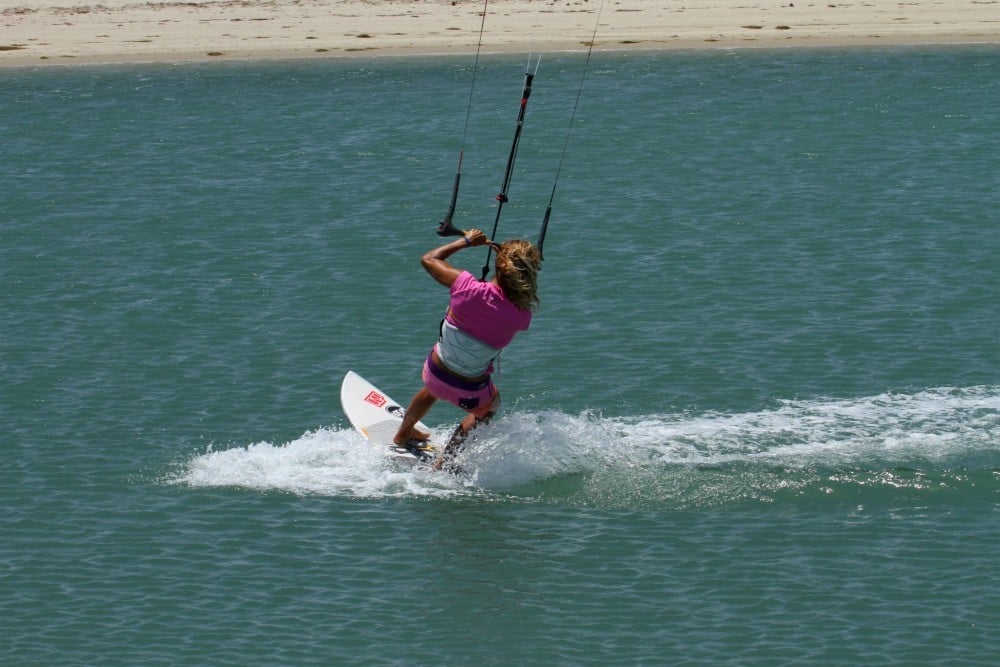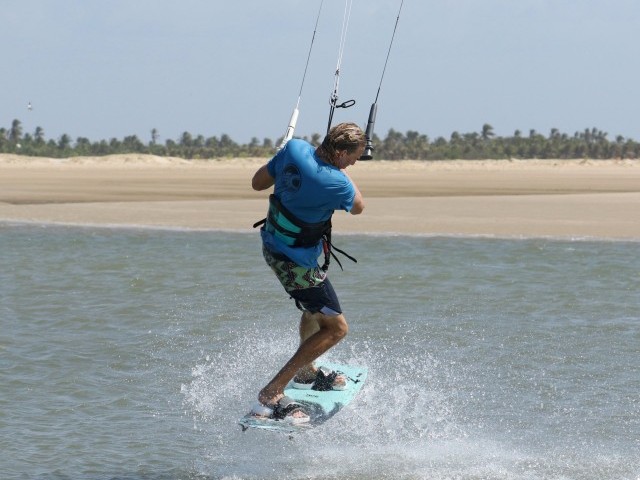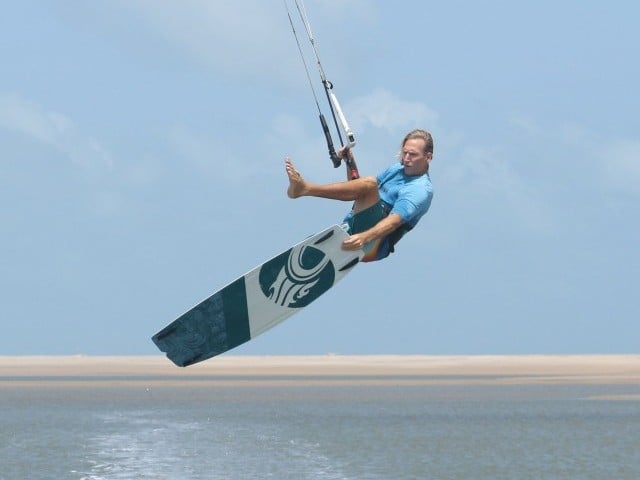
Chicken Gybe Part 1
Technique / Intermediate
Introduction
The Chicken gybe is often used but rarely celebrated. It serves surfboard riders well as a method of changing direction quickly when time, space or both are limited. The chicken gybe is particularly useful if you are yet to master the tack as it will enable you to turn on a dime and not loose ground down wind. That said, even if you are a tacking don, you’ll no doubt squeeze a few of these out in a session as they’re a go-to, 100% reliable, get out of jail card.
As with the original gybe there are two ways of executing the Chicken Gybe, so we’ll start here with the first, the heel to toe. Your aim is to turn the board from it’s heel rail to it’s toe rail without carving down wind – instead you’ll be pivoting the board around on its tail, using the kite for both pull and support.
The Approach
In order to pivot the board around on the tail you’ll first need to slow down. In the photo you can see that Karine has dropped her weight back on the board by moving her hips and shoulders over her back foot. This weights the tail of the board and lifts the nose, creating drag and therefore slowing the board down. As with a normal gybe you do need to position your feet so that you’ll be able to ride toe side in a comfortable position once you have turned. Karine has her front foot straddling the centre line of the board and she has her back foot across on the back pad. Her stance is wide enough to balance on the board but not too wide that she won’t be able to ride toe side once she completes the turn. With the board slowing Karine moves the kite up to 11 o’clock.
Initiate the Turn
To start the pivot Karine moves all her weight back and bends her back leg, she also keeps weight on her heels as she doesn’t want to flatten the board – she’s going from rail to tail to rail. She then starts to steer the kite slowly across the window, using both hands on the bar. As the kite starts to gently pull she turns her head and shoulders and supports herself on the bar, keeping the power on and slowly moving the kite. In order to pivot Karine aims to steer the kite up and across the window, this way the turn will be sharp and can be performed whatever the wind strength. If Karine was to throw the kite across the window she would be pulled up over the board and would start to carve the board, therefore loosing ground down wind.
Leg Scissor
As the board turns you must keep all your weight back and upwind of the board, so that you can use the pull of the kite to spin you around. With all your weight on the tail you can push the front of the board away from you with your extended front leg. The scissoring action is what enables you to turn the board the full 180˚. In the photo as the board points down wind Karine pushes her front foot away and pulls her back foot under her.
Keep Moving the Kite
Karine keeps the kite moving, as it is the kite that will help you complete the turn. With her back leg pulled in underneath her Karine can now start to put the weight onto the ball and toes of her back foot in order to engage the toe side rail. She still has her bar pulled in on the sweet spot and the kite is still supporting her as it moves slowly across the window. You can see that up to this point her body weight has remained upwind of the board.
Toe Side
If you had your weight right during the turn, this is how you’ll finish – the same as you went in. All your weight back and the nose somewhat excitedly sticking up in front of you. The kite should now be at the edge of the window and you have performed a slow but very sharp turn. All that remains now is to get the board trimmed so that you can accelerate and work the kite to gain some power. Karine has her bar pulled in and will now shift her hips forward onto her front foot to level the board out, whilst she works some power back into the kite. Once she is moving she can either continue toe side or change her feet to crank upwind on her heels.
Top Tips
To start with try this in flat water, so that you can concentrate on doing everything slowly. Then once you have the movement you can start to pivot the board and move the kite more quickly to snap round in a blink of an eye. Keep your hands centred on the bar, as this will stop you moving the kite too quickly and it will help you keep the bar on the sweet spot throughout the turn.
Now have a look at the videos and sequence to see the Chicken Gybe in full.
Common Problems
If the board starts to carve downwind you have either entered with too much speed or you have flattened the board, keep edging/railing as you move your weight back.
If the kite ends up with no power whatsoever it means that you have let the bar out during the turn, which will let the kite flutter to the edge of the window. Keep the bar in so that the kite pulls you around.
If you can’t get moving at the end, get your weight forwards into your surfboard toeside position. The turning position will not do anything but sink the tail.
Keystones
- Slow down
- Weight way back and edge
- Slowly steer kite on sweet spot
- Turn head and scissor legs
- Finish turn and then move weight forwards
This technique article was in Issue 48 of IKSURFMAG.
Related
By Christian and Karine
Christian and Karine have been working together as a coaching team, running improver to advanced kitesurfing clinics since 2003.










